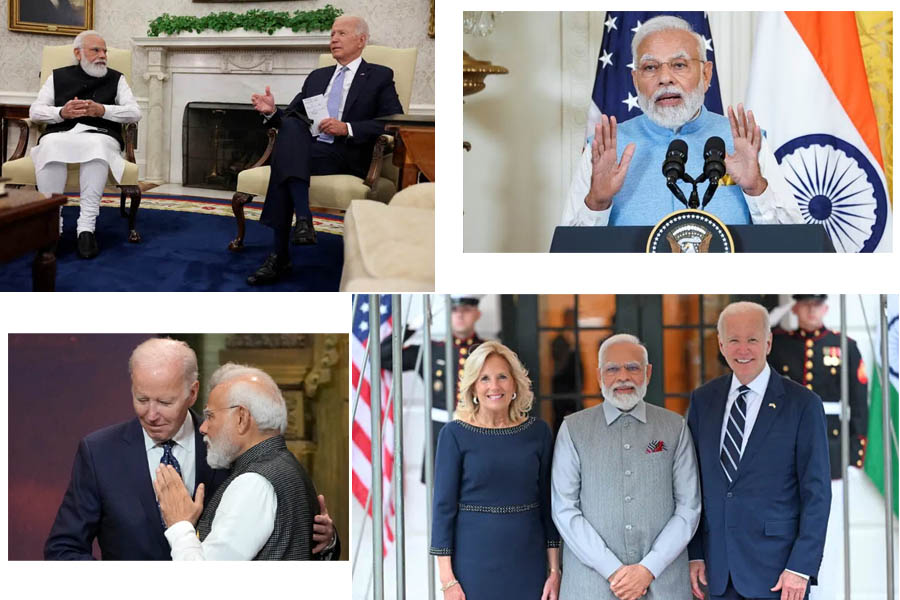
Indian Prime Minister Narendra Modi's visit to the United States has garnered significant attention, given the evolving dynamics in the region and the growing partnership between the two countries. As the U.S. adopts a strategy of "friend-shoring," diversifying away from China and exploring opportunities in other countries, Modi's visit holds immense symbolism. Arriving in Washington DC, the capital of a nation he was once prohibited from visiting for almost a decade, Modi joins the esteemed ranks of leaders like Winston Churchill, Nelson Mandela, and Volodymyr Zelenskiy, who have addressed a joint session of Congress more than once. Statements from U.S. officials in the lead-up to the visit have been effusive, highlighting the significant defense partnership and describing the connection between the world's oldest and largest democracies as unique. With India surpassing China as the most populous country and poised to become the third-largest economy, officials emphasize India's critical strategic partnership with the United States in the coming decades. They assert that the bilateral partnership is deeper and more expansive than ever before, envisioning a shared commitment to upholding a free and open Indo-Pacific, ensuring prosperity, security, stability, and resilience.
During his state visit, Modi has engaged with President Joe Biden, First Lady Jill Biden, as well as prominent business leaders such as Tesla CEO Elon Musk and Bridgewater Associates founder Ray Dalio. Notably, Indian students constitute the largest foreign student community in the United States, with a 20% increase in their numbers last year alone. Recognizing this trend, the U.S. government expresses its desire to welcome more Indian students and workers. Last year, Indian nationals received approximately one in every five student visas issued by the U.S., far surpassing any other nationality. The U.S. Department of State is also considering changes to the renewal process for temporary work visas, further underscoring the importance of people-to-people ties. Beyond optics and diplomatic exchanges, Modi's visit is expected to yield substantive outcomes, consolidating the ties between the two nations. Despite fundamental differences on certain key issues, discussions will encompass defense, technology, security, artificial intelligence, telecommunications, visas, manufacturing, and space cooperation. While sensitive topics such as the erosion of democracy in India and the shrinking space for dissent and civil society may not be discussed at length, the visit aims to bolster the overall relationship. Since Modi's previous visit to the U.S. in 2019, China's actions along its border with India have become increasingly aggressive. The two nations experienced their most significant military confrontation in 70 years in 2020, resulting in casualties. China's continued territorial encroachments and limited disengagement efforts have heightened the geopolitical alignment between India and the U.S. on countering China's influence. This alignment led to the formation of the Quadrilateral Security Dialogue (Quad) involving India, the U.S., Australia, and Japan. The U.S.-India partnership has witnessed enhanced security and defense cooperation, including intelligence sharing and joint military exercises near the China border. During Modi's visit, defense deals related to surveillance technology and drones are expected to be finalized.
Recognizing India's lag in technological advancements compared to China, India has embraced the United States' willingness to share advanced technology and cyber resources. A landmark agreement allowing General Electric, a U.S. conglomerate, to produce jet engines in India for Indian military aircraft is being pursued. Although comprehensive trade deals may not be anticipated during this visit, trade between India and the U.S. reached a record $191 billion in 2022, making the U.S. India's largest